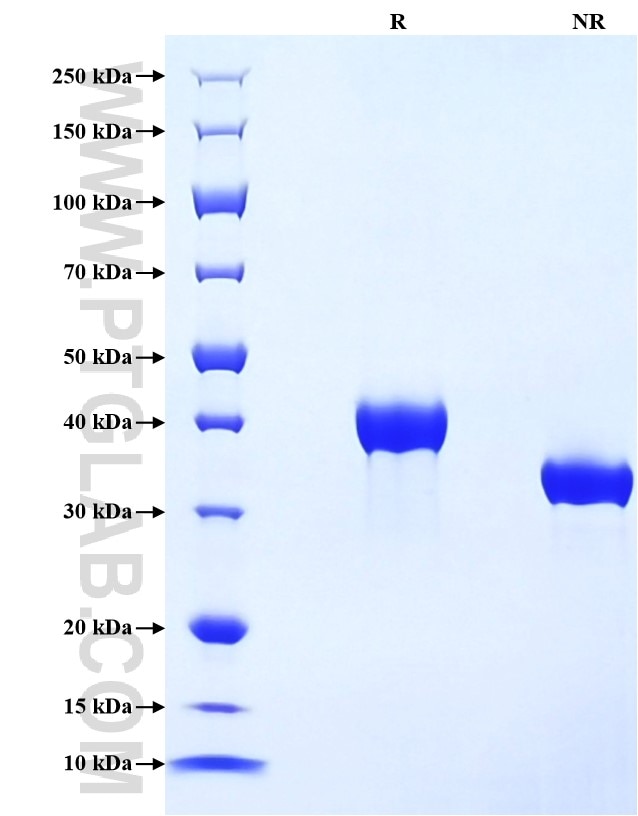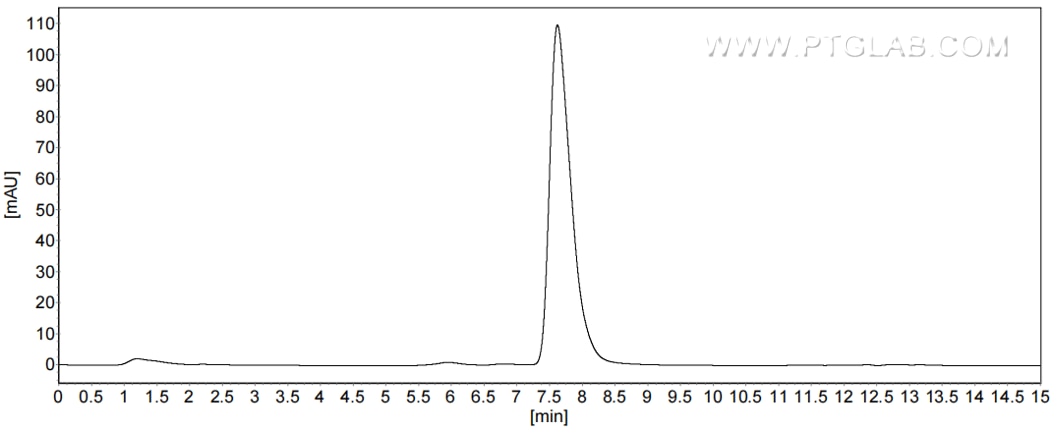Recombinant Human SPARC protein (His Tag) (HPLC verified)
Species
Human
Purity
>90 %, SDS-PAGE
>90 %, SEC-HPLC
Tag
His Tag
Activity
not tested
Cat no : Eg1169
Validation Data Gallery
Product Information
| Purity | >90 %, SDS-PAGE >90 %, SEC-HPLC |
| Endotoxin | <0.1 EU/μg protein, LAL method |
| Activity |
Not tested |
| Expression | HEK293-derived Human SPARC protein Ala18-Ile303 (Accession# P09486) with a His tag at the C-terminus. |
| GeneID | 6678 |
| Accession | P09486 |
| PredictedSize | 34.3 kDa |
| SDS-PAGE | 37-44 kDa, reducing (R) conditions |
| Formulation | Lyophilized from 0.22 μm filtered solution in PBS, pH 7.4. Normally 5% trehalose and 5% mannitol are added as protectants before lyophilization. |
| Reconstitution | Briefly centrifuge the tube before opening. Reconstitute at 0.1-0.5 mg/mL in sterile water. |
| Storage Conditions |
It is recommended that the protein be aliquoted for optimal storage. Avoid repeated freeze-thaw cycles.
|
| Shipping | The product is shipped at ambient temperature. Upon receipt, store it immediately at the recommended temperature. |
Background
SPARC, also known as ON (Osteonectin) or BM-40 (Basement-membrane protein 40), is an extracellular glycoprotein, belongs to a group of matricellular proteins defined as secreted components that do not contribute directly to the formation of structural elements but serve to modulate cell-matrix interactions and cellular functions. SPARC is expressed at high levels in bone tissue, is distributed widely in many other tissues and cell types, and is associated generally with tissues undergoing morphogenesis, remodeling and wound repair. It elicits changes in cell shape, inhibits cell-cycle progression, and influences the synthesis of extracellular matrix. Altered expression of SPARC has been reported in a variety of cancers, which include breast, ovarian, colorectal, and pancreatic cancer as well as melanoma and glioblastomas.
References:
1. P Bornstein, et al. (1995) J Cell Biol. 130(3):503-6. 2. Paul Bornstein, et al. (2002) Curr Opin Cell Biol. 14(5):608-16. 3. Q Yan, et al. (1999) J Histochem Cytochem. 47(12):1495-506. 4. A D Bradshaw, et al. (2003) Proc Natl Acad Sci U S A. 100(10):6045-50. 5. Isabella T Tai, et al. (2008) Drug Resist Updat. 11(6):231-46.


